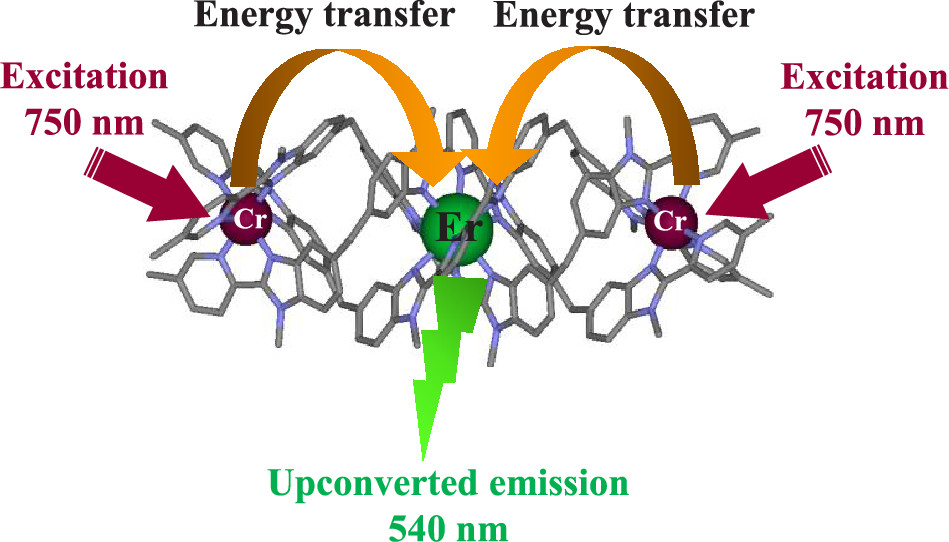Publications
-
Metal-Based Linear Light-Upconversion Implemented in Molecular Complexes: Challenges and Perspectives
Hélène Bolvin, Alexandre Fürstenberg, Bahman Golesorkhi, Homayoun Nozary, Inès Taarit, and Claude Piguet
Acc. Chem. Res. 2022, 55(1), 442-456

|
The piling up of low-energy photons to produce light beams of higher energies while exploiting the nonlinear optical response of matter was conceived theoretically around 1930 and demonstrated 30 years later with the help of the first coherent ruby lasers. The vanishingly small efficacy of the associated light-upconversion process was rapidly overcome by the implementation of powerful successive absorptions of two photons using linear optics in materials that possess real intermediate excited states working as relays. In these systems, the key point requires a favorable competition between the rate constant of the excited-state absorption (ESA) and the relaxation rate of the intermediate excited state, the lifetime of which should be thus maximized. Chemists and physicists therefore selected long-lived intermediate excited states found (i) in trivalent lanthanide cations doped into ionic solids or into nanoparticles (2S+1LJ spectroscopic levels) or (ii) in polyaromatic molecules (triplet states) as the logical activators for designing light upconverters using linear optics. Their global efficiency has been stepwise optimized during the past five decades by using indirect intermolecular sensitization mechanisms (energy transfer upconversion = ETU) combined with large absorption cross sections.
The induction of light-upconversion operating in a single discrete entity at the molecular level is limited to metal-based units and remained a challenge for a long time because coordination complexes possess high-frequency oscillators incompatible with the existence of (i) scales of accessible excited relays with long lifetimes and (ii) final high-energy emissive levels with noticeable intrinsic quantum yields. In contrast to intermolecular energy transfer processes operating in metal-based doped solids, which require statistical models, the combination of sensitizers and activators within the same molecule limits energy transfers to easily tunable intramolecular processes with first-order kinetic rate constants. Their successful programming in a trinuclear CrErCr complex in 2011 led to the first detectable near-infrared to green light upconversion induced in a molecular unit under reasonable excitation intensity. The subsequent progress in the modeling and understanding of the key factors controlling metal-based light upconversion operating in molecular complexes led to a burst of various designs exploiting different mechanisms, excited-state absorption (ESA), energy transfer upconversion (ETU), cooperative luminescence (CL), and cooperative upconversion (CU), which are discussed in this Account.
DOI: 10.1021/acs.accounts.1c00685
Archive ouverte / Open archive: unige:159067
